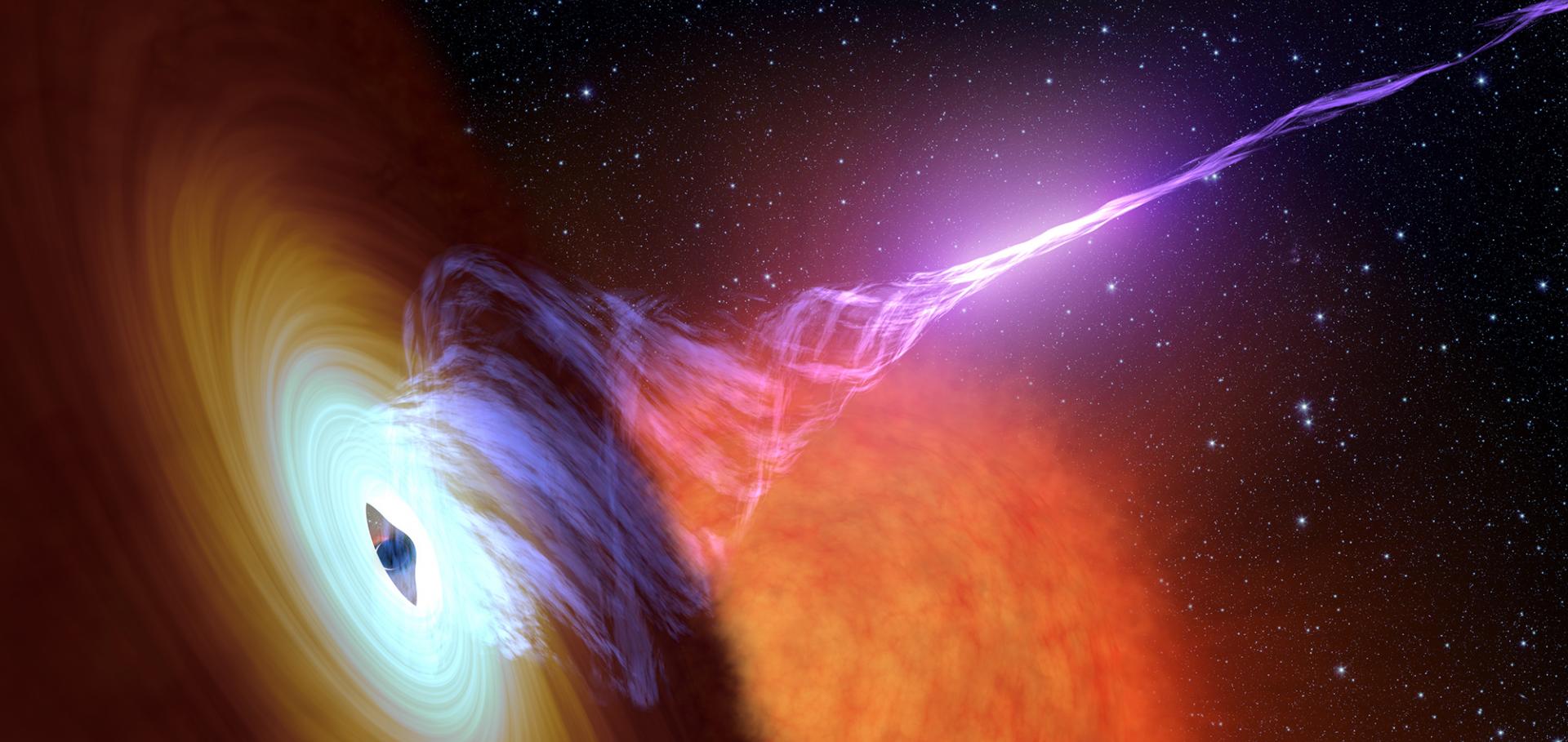Living in a loft
Proceedings of Science 122 (2011)
Abstract:
LOFT (Large area Observatory For x-ray Timing) is an innovative mission concept for the next generation of X-ray experiments, submitted to the ESA Call for Medium size missions “M3”. Recent developments in the field of Silicon detectors allowed us to design a realistic observatory devoted to X-ray timing studies with an effective area above 10 m2, operating in the energy range 2-30 keV with an energy resolution of ∼250 eV. Such an exceedingly large area (20 times that of RXTE/PCA), with a time resolution better than 10 µs, will enable unprecedently fast and accurate time variability studies related to accreting collapsed objects (e.g. fast coherent pulsations and QPOs). The scientific payload is complemented by a coded-mask wide field monitor based on similar detectors. In this paper we present the mission concept, the payload design and the expected performances.On the nature of the 'radio-quiet' black hole binaries
Monthly Notices of the Royal Astronomical Society 413:3 (2011) 2269-2280
Abstract:
The coupling between accretion processes and ejection mechanisms in accreting black holes in binary systems can be investigated by empirical relations between the X-ray/radio and X-ray/optical-infrared luminosities. These correlations are valid over several orders of magnitude and were initially thought to be universal. However, recently, many black hole binaries have been found to produce jets that, given certain accretion-powered luminosities, are fainter than expected from the earlier correlations. This shows that black holes with similar accretion flows can produce a broad range of outflows in power, suggesting that some other parameters or factors might be tuning the accretion-ejection coupling. Recent work has already shown that this jet power does not correlate with the reported black hole spin measurements. Here we discuss whether fixed parameters of the binary system (orbital period, disc size, inclination), as well as the properties of the outburst, produce any effect on the energy output in the jet. No obvious dependence is found. We also show that there is no systematic variation in the slope of the radio-X-ray correlation with normalization. We define a jet-toy model in which the bulk Lorentz factor becomes larger than ̃1 above ̃0.1 per cent of the Eddington luminosity. With this model, if we assume random inclination angles which result in highly variable boosting at large Eddington ratios, we are able to reproduce qualitatively the scatter of the X-ray-radio correlation and the 'radio-quiet' population. However, the model seems to be at odds with some other observed properties of the systems. We also compare the 'radio-quiet' black holes with the neutron stars. We show that if a mass correction from the Fundamental Plane is applied, the possibility that they are statistically indistinguishable in the X-ray-radio plane cannot be completely ruled out. This result suggests that some of the outliers could actually be neutron stars or that the disc-jet coupling in the 'radio-quiet' black holes is more similar to the one in neutron stars. © 2011 The Authors. Monthly Notices of the Royal Astronomical Society © 2011 RAS.Radiatively efficient accreting black holes in the hard state: The case study of H1743-322
Monthly Notices of the Royal Astronomical Society 414:1 (2011) 677-690
Abstract:
In recent years, much effort has been devoted to unravelling the connection between the accretion flow and the jets in accreting compact objects. In the present work, we report new constraints on these issues, through the long-term study of the radio and X-ray behaviour of the black hole candidate H1743-322. This source is known to be one of the 'outliers' of the universal radio/X-ray correlation, i.e. a group of accreting stellar-mass black holes displaying fainter radio emission for a given X-ray luminosity than expected from the correlation. Our study shows that the radio and X-ray emission of H1743-322 are strongly correlated at high luminosity in the hard spectral state. However, this correlation is unusually steep for a black hole X-ray binary: b~ 1.4 (with Lradio∝LbX). Below a critical luminosity, the correlation becomes shallower until it rejoins the standard correlation with b~ 0.6. Based on these results, we first show that the steep correlation can be explained if the inner accretion flow is radiatively efficient during the hard state, in contrast to what is usually assumed for black hole X-ray binaries in this spectral state. The transition between the steep and the standard correlation would therefore reflect a change from a radiatively efficient to a radiatively inefficient accretion flow. Finally, we investigate the possibility that the discrepancy between 'outliers' and 'standard' black holes arises from the outflow properties rather than from the accretion flow. © 2011 The Authors Monthly Notices of the Royal Astronomical Society © 2011 RAS.X-ray and radio variability in the low-luminosity active galactic nucleus NGC 7213
Monthly Notices of the Royal Astronomical Society 411:1 (2011) 402-410
Abstract:
We present the results of a ∼3yr campaign to monitor the low-luminosity active galactic nucleus (LLAGN) NGC 7213 in the radio (4.8 and 8.4GHz) and X-ray bands (2-10keV). With a reported X-ray Eddington ratio of 7 × 10-4LEdd, NGC 7213 can be considered to be comparable to a hard-state black hole X-ray binary. We show that a weak correlation exists between the X-ray and radio light curves. We use the cross-correlation function to calculate a global time-lag between events in the X-ray and radio bands to be 24 ± 12 d lag (8.4 GHz radio lagging X-ray) and 40 ± 13d lag (4.8GHz radio lagging X-ray), respectively. The radio-radio light curves are extremely well correlated with a lag of 20.5 ± 12.9d (4.8GHz lagging 8.4 GHz). We explore the previously established scaling relationship between core radio and X-ray luminosities and black hole mass LR∝M0.6-0.8L0.6X, known as the 'Fundamental Plane of black hole activity', and show that NGC 7213 lies very close to the best-fitting 'global' correlation for the plane as one of the most-luminous LLAGNs. With a large number of quasi-simultaneous radio and X-ray observations, we explore for the first time the variations of a single AGN with respect to the Fundamental Plane. Although the average radio and X-ray luminosities for NGC 7213 are in good agreement with the Plane, we show that there is intrinsic scatter with respect to the Plane for the individual data points. © 2010 The Authors Monthly Notices of the Royal Astronomical Society © 2010 RAS.e-VLBI observations of Circinus X-1: Monitoring of the quiescent and flaring radio emission on au scales
Monthly Notices of the Royal Astronomical Society 414:4 (2011) 3551-3556


